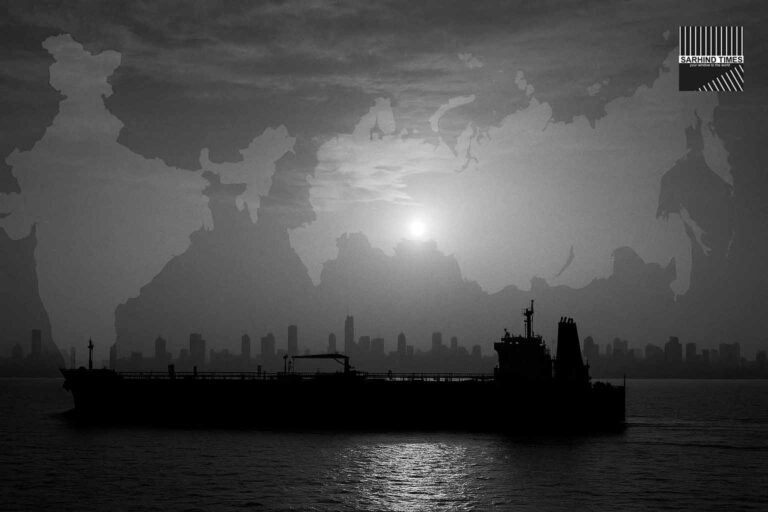By International Affairs Desk | SarhindTimes.com
Date: October 8, 2025
Prime Minister Narendra Modi on Tuesday telephoned Russian President Vladimir Putin to extend birthday greetings and reaffirm India’s commitment to its decades-old “Special and Privileged Strategic Partnership” with Moscow. The conversation, described by both sides as “warm and forward-looking,” comes at a time when New Delhi is preparing to host the annual India–Russia summit later this year — a diplomatic event seen as a litmus test for balancing old friendships amid shifting global alliances.
1. A Tradition of Personal Diplomacy
For more than a decade, Modi and Putin have cultivated a personal rapport that transcends formal protocol. Tuesday’s exchange — which sources said lasted over 20 minutes — saw Modi extend birthday greetings to his “friend Vladimir” while reviewing ongoing cooperation in key sectors including defence, energy, space exploration, and trade diversification.
The Russian President reciprocated, appreciating India’s continued engagement despite what Kremlin aides termed “extraordinary global turbulence.”
Indian officials described the call as “cordial but strategic,” noting that both leaders “acknowledged new realities but reaffirmed mutual trust.”
2. India–Russia: A Legacy Reinvented
The Modi–Putin conversation highlights how the India–Russia partnership, once defined by Cold War-era defence dependency, is evolving into a multi-sectoral engagement under modern constraints.
While Western sanctions have reshaped Moscow’s global trade map, India has emerged as one of Russia’s most reliable economic partners, ramping up oil imports, exploring rupee–ruble settlements, and deepening cooperation in critical areas such as space science, nuclear energy, pharmaceuticals, and agriculture.
Trade volumes between the two nations crossed $65 billion in FY2024–25, driven largely by energy purchases. Russia is now India’s second-largest supplier of crude oil, surpassing Saudi Arabia.
“India’s position is pragmatic,” said a senior official at the Ministry of External Affairs (MEA). “We engage with Russia where it serves national interest — energy security, defence technology, and supply stability.”
3. Defence Partnership: From Dependence to Co-Development
The defence relationship remains the cornerstone of India–Russia ties.
For decades, over 60% of India’s military hardware originated from Russia — ranging from Su-30 MKI fighter jets and T-90 tanks to the INS Chakra submarine.
While New Delhi has since diversified defence imports — notably through U.S., French, and Israeli systems — Moscow continues to provide critical spares, maintenance, and joint production platforms.
Key projects currently in motion:
- BrahMos missile production line in Lucknow and Nagpur;
- AK-203 assault rifle manufacturing in Amethi;
- Upgradation of Sukhoi-30 fleet to extend operational life;
- Long-term cooperation under India’s “Atmanirbhar Bharat in Defence” initiative.
“The Russian defence ecosystem still underwrites our deterrence capacity,” said a senior Indian Air Force official. “But the model is shifting — from buyer–seller to co-producer.”
Analysts note that India’s efforts to indigenize spares and assemblies will continue even as cooperation with Russia endures in high-technology domains such as hypersonics, electronic warfare, and anti-submarine systems.
4. Energy: The Strategic Lifeline
If defence is the legacy pillar, energy is the new lifeline.
Since early 2023, India has leveraged Western sanctions to purchase Russian crude at discounted rates, saving billions in import bills while maintaining a delicate diplomatic balance.
Indian refiners — particularly IOC, BPCL, and Reliance — have optimized logistics for long-haul shipments from Russian ports.
- In 2024–25, Russian oil accounted for nearly 38% of India’s crude basket, up from less than 1% before 2022.
- India’s purchases saved an estimated $6 billion through price discounts.
- The two sides are exploring joint refining and petrochemical ventures, including the Vladivostok–Chennai energy corridor.
“Energy is both economic and strategic,” said Ambassador (Retd.) Kanwal Sibal. “By maintaining stable supplies from Russia, India shields itself from OPEC politics and Western volatility.”
The leaders’ call reaffirmed commitments to expand nuclear cooperation under the Kudankulam power project, where Russian state firm Rosatom remains a key partner.
5. Trade & Connectivity: Navigating the Sanctions Maze
Western restrictions on Russian banking and shipping have complicated direct trade, prompting the two nations to build alternative financial and logistical corridors.
- The International North-South Transport Corridor (INSTC) — linking Mumbai, Bandar Abbas (Iran), and St. Petersburg — has reduced cargo time by 40%.
- A proposed Chennai–Vladivostok Maritime Route is under feasibility study.
- The Rupee–Ruble payment mechanism, though initially bumpy, is stabilizing through local bank partnerships.
India has also offered to settle trade in Indian rupees via special vostro accounts, bypassing the U.S. dollar system.
These steps allow bilateral trade to grow without violating international norms, illustrating India’s strategic tightrope walk — maintaining commerce without breaching sanctions frameworks.
6. Geopolitical Balancing: The Multi-Alignment Doctrine
The phone call reflects India’s ongoing multi-alignment strategy — nurturing strategic partnerships across competing blocs.
Even as New Delhi deepens ties with the United States, Japan, and Europe through the Quad, it continues high-level dialogue with Russia and China via BRICS, the Shanghai Cooperation Organisation (SCO), and other forums.
“The days of binary alignment are over,” remarked former Foreign Secretary Shyam Saran. “India believes in issue-based partnerships — strategic autonomy, not strategic isolation.”
This philosophy explains why Modi–Putin conversations maintain continuity even as India engages Western capitals on Indo-Pacific initiatives and defence procurements.
7. The Annual Summit: A Test of Continuity
The upcoming India–Russia Annual Summit, scheduled tentatively for December 2025, will mark the 22nd such meeting since the tradition began in 2000.
It is expected to review:
- The status of defence technology transfers;
- Long-term crude and LNG contracts;
- New projects under the Eurasian Economic Union (EAEU) framework;
- Expansion of educational, cultural, and scientific exchanges.
Diplomatic sources say the summit will likely be held in New Delhi, signaling a normalization of high-level exchanges that slowed during the pandemic and subsequent geopolitical realignments.
8. BRICS, G20, and Eurasian Context
The Modi–Putin dialogue also comes as the BRICS grouping undergoes historic expansion, incorporating Saudi Arabia, Iran, Egypt, and others — altering global economic calculus.
Both leaders reportedly discussed coordination within BRICS, especially on new development financing and cross-currency settlements to reduce dollar dependency.
In the G20 context, India’s presidency in 2023–24 laid the groundwork for inclusive multipolar engagement — an approach Moscow supports as a counterbalance to Western-dominated platforms.
Observers see Modi and Putin’s rapport as an anchor of stability in an increasingly polarized world order.
9. Critics and Counterpoints
Critics of India’s Russia policy argue that over-reliance on discounted oil and legacy defence contracts could expose India to secondary sanctions or reputational costs in the West.
They also point to limited progress in non-oil trade diversification and concerns over technology obsolescence in some Russian-origin weapon systems.
However, supporters counter that disengagement from Russia would:
- Undermine India’s strategic autonomy;
- Weaken historical goodwill;
- Jeopardize ongoing military cooperation projects.
“India’s approach is realism, not nostalgia,” said defence analyst Lt Gen. Deependra Singh (Retd.). “Our partnerships with Washington and Moscow aren’t mutually exclusive — they’re mutually balancing.”
10. Voices from Diplomacy
Former Indian Ambassador to Russia P.S. Raghavan summed it up:
“Every Indian Prime Minister since Nehru has called every Russian leader on his birthday. But Modi–Putin ties are more than symbolic — they’ve adapted to changing geopolitics while retaining strategic substance.”
Russian envoy Denis Alipov recently remarked that India–Russia cooperation “remains immune to external turbulence,” noting “trust built over seven decades cannot be undone by short-term geopolitical noise.”
11. The China Factor
Analysts observe that Moscow’s growing dependence on Beijing since the Ukraine war has reshaped its Asian calculus.
For India, maintaining close ties with Russia serves as a diplomatic buffer — preventing a complete Russia–China alignment.
By engaging Moscow economically and diplomatically, New Delhi ensures it retains strategic leverage in Eurasia and preserves communication channels with both power blocs.
12. Energy Corridor and the Arctic Frontier
Another emerging pillar of cooperation is the Arctic energy corridor.
Russia has invited India to invest in LNG projects in the Yamal Peninsula and Northern Sea Route infrastructure, offering shorter maritime access to Europe and East Asia.
Indian shipping firms and ONGC Videsh are studying participation, aligning with India’s Act Far East policy, first announced by Modi at the 2019 Vladivostok Forum.
13. Technology and Space Cooperation
In space and technology, collaboration continues through:
- The Gaganyaan human spaceflight program, where Russian expertise supports astronaut training.
- Joint ventures in remote sensing, satellite navigation, and materials science.
India’s upcoming lunar and planetary missions are expected to involve Russian payload components.
14. The Diplomatic Optics
The optics of Modi’s birthday call carry diplomatic symbolism.
At a time when Western capitals continue to isolate Moscow over Ukraine, India’s outreach underscores its non-aligned pragmatism.
The move signals that New Delhi will not let global polarization dictate its bilateral priorities — an approach applauded by many developing nations seeking similar policy autonomy.
15. Editorial View: Between Friendship and Strategy
The India–Russia equation rests on pragmatic continuity, not ideological loyalty.
In the 1970s, Moscow was India’s defence shield; in the 2020s, it is a pillar of energy security and multipolar diplomacy.
For Modi and Putin, personal chemistry facilitates dialogue, but the partnership now depends on mutual benefit, not nostalgia.
As one diplomat put it: “The warmth of the phone call reflects friendship; the agenda behind it reflects strategy.”
16. Looking Ahead
With both nations recalibrating amid global flux, the challenge is to future-proof their partnership through innovation and diversification:
- Expanding trade beyond hydrocarbons;
- Aligning with global green energy transitions;
- Deepening digital and fintech cooperation;
- Strengthening people-to-people exchanges through education and tourism.
As the annual summit approaches, the Modi–Putin call serves as a reminder that India’s diplomacy thrives on dialogue, not dogma.
#IndiaRussia #ForeignPolicy #Geopolitics #Energy #Defence #Diplomacy #Modi #Putin #StrategicPartnership #BRICS





















+ There are no comments
Add yours